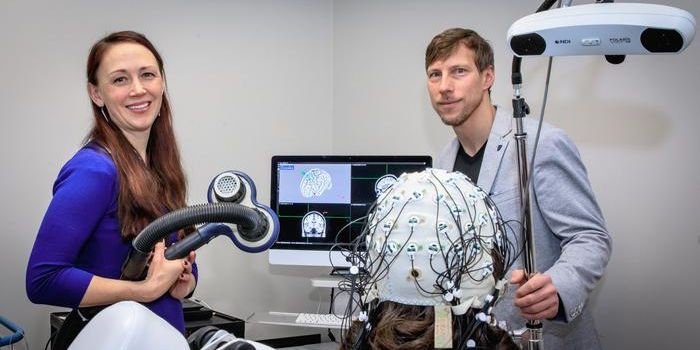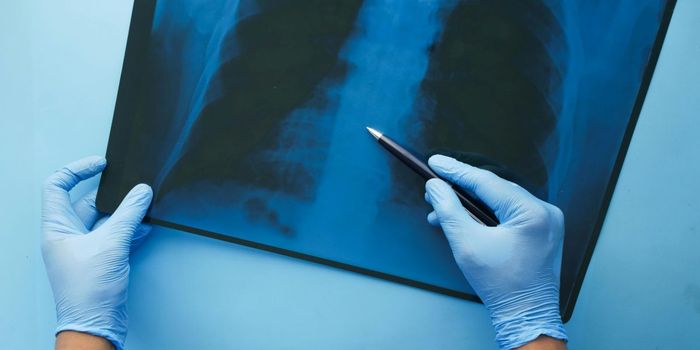Cell Division Research Reveals More About a Protein That's Elevated in Cancer
Every day, the adult human body has to produce billions of new cells, and it does so by triggering existing cells to divide. Cell division (animated in the video below) is a carefully controlled process, and uncontrolled cell division is cancer. Scientists have now learned more about the molecular mechanisms of cell division, and in doing so, revealed the role of a protein called TPX2, which is present at high levels in cancer cells. The findings, which were reported in Nature Communications study and eLife, may help create new therapeutics for cancer.
During cell division, the genome has to be replicated, and the two new cells each have to receive their own copy. During cell division, structures called microtubules link to the cell's genetic material, which is packaged as chromosomes and pulls it to the right new cell. If each cell doesn’t get a complete copy of the genome, the genetic errors may cause cancer to arise. Microtubules are made from filaments, which are themselves made of proteins called tubulin. These filaments have to form microtubules in the right place at the right time, and create a spindle apparatus. A microtubule can form from the side of one that already exists, in what’s called branching microtubule nucleation, which enables the generation of large numbers of microtubules, all pointing towards chromosomes that will be captured by the spindle.
Several pieces of cellular machinery are required for branching microtubule nucleation; the gamma-tubulin ring complex (γ-TuRC) triggers tubulin to assemble into microtubules, another called the augmin complex links γ-TuRC to existing microtubules, and a protein called TPX2 plays a role as well. TPX2 has been found to be elevated in more than 25 percent of cancers. When TPX2 levels are high, microtubules don’t assemble properly, and cancer gets worse. Researchers wanted to know more about how TPX2 works.
"To better understand the mechanism of branching microtubule nucleation, we set out to reconstitute the process outside of the cell using purified proteins," said Sabine Petry, assistant professor of molecular biology at Princeton University.
Graduate student researchers Raymundo Alfaro-Aco and Akanksha Thawani were able to recreate branching microtubule nucleation in a tube, as reported in eLife. TPX2 is able to bind to microtubules (like augmin does) and recruits γ-TuRC to initialize branching microtubule nucleation. TPX2 also helps bring augmin to microtubules, enhancing γ-TuRC recruitment.
"Branching microtubule nucleation, therefore, occurs most efficiently when augmin, TPX2, and γ-TuRC are all present," Alfaro-Aco said. "Surprisingly, TPX2 lies at the very heart of controlling this reaction, despite being only a single protein amongst the large multi-subunit complexes augmin and γ-TuRC."
Reporting in Nature Communications, Petry and Matthew King, her former graduate student, showed that TPX2 acts like a liquid; it layers onto existing microtubules, forming droplets that contain tubulin. In doing so, it promotes branching microtubule nucleation. In a phase-separation mechanism, TPX2 and tubulin condense and form droplets that microtubules can grow from. Since these droplets condense onto microtubules that already exist, branched microtubule structures are generated.
"The study suggests that the co-condensation of TPX2 and tubulin creates a local reservoir of tubulin on a pre-existing microtubule that may be necessary to efficiently promote branching microtubule nucleation," King said.
The studies have indicated that TPX2 is critical to branching microtubule nucleation. Petry suggested that certain signals control the condensation of TPX2 so it only occurs during cell division when the spindle is required.
"Our findings on the behavior of TPX2 may guide future therapeutic efforts aimed at modulating cell division," Petry said. "In addition, our reconstitution of branching microtubule nucleation is an important step toward reconstituting the entire spindle apparatus, as well as other cellular structures that depend on this microtubule assembly pathway."
Sources: Science Daily via Princeton University, Nature Communications, eLife








